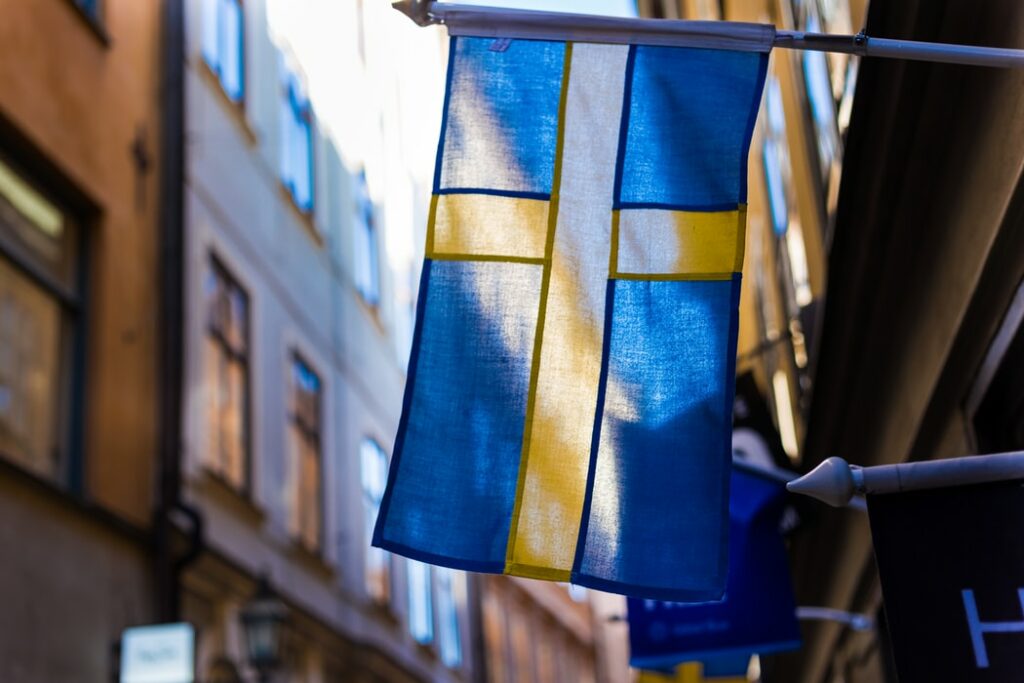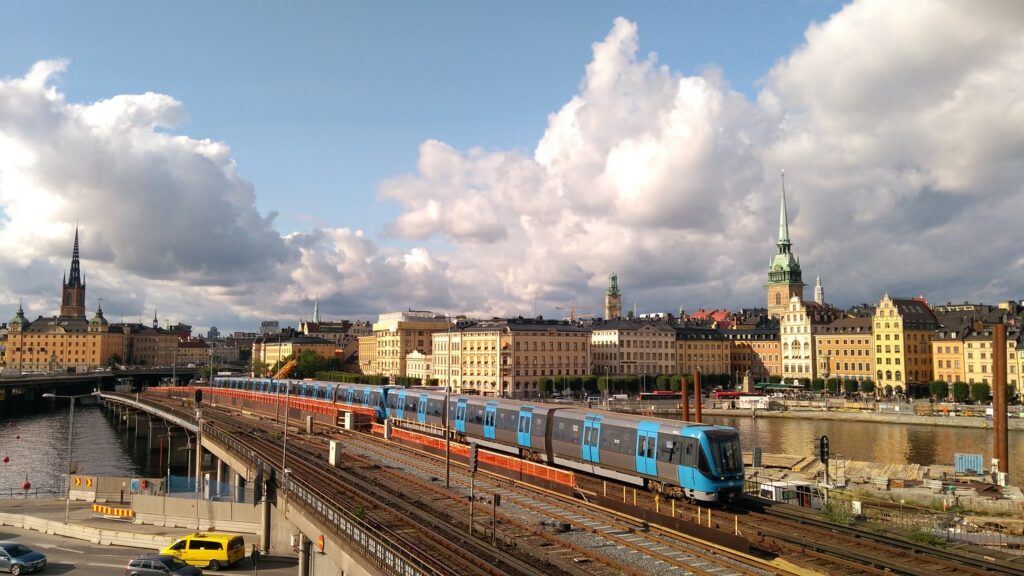As countries in Europe reported lower coronavirus figures following a lockdown, Sweden’s relaxed approach continues to draw high infection rates and fatality rates. The country is still far from achieving herd immunity and criticism is mounting against the country’s strategy.

Sweden is not used to being on “the worst of” lists. Like its Scandinavian neighbors, Sweden consistently ranks high in most economic, social, and educational indexes. But unlike its neighbors, Sweden opted for a much more lax approach to the coronavirus lockdown.
It’s not like Sweden did nothing — they banned large gatherings, closed some places down, and took all the initial measures that other countries followed. But as the rest of Scandinavia (and of Europe) pushed a tight lockdown, Sweden refused, and shops, restaurants, gyms, some schools, and many workplaces remained open. So far, that strategy does not seem to be paying off.
Damning figures
Sweden has a few major assets on its side: a highly educated population, a generally low population density (with the exception of its capital, Stockholm), and one of the best health systems in the world. So it doesn’t make much sense to compare Sweden with other countries that don’t share these characteristics. Luckily, its neighbors Denmark, Norway, and Finland share them to a great extent, and they all implemented a tight lockdown — so it makes for an interesting comparison.
When looking at the total number of cases, things don’t look too good for Sweden. You can see that the outbreak in Norway, for instance, started earlier and more aggressively than in Sweden, but after some point, the total number of cases started to taper off — but not in Sweden.
But the official number of cases is misleading, because it depends on the number of tests. So perhaps, the number of deaths is more revealing. Here, the charts look even worse for Sweden.
Initially, Sweden saw death rates from COVID-19 that were similar to other European nations that had closed down their economies. But as time passed, the lack of a strict lockdown seemed to take a higher and higher toll.
Now, Sweden has the highest coronavirus death rate in Europe and one of the highest death rates in the world — with little to show for it.
Herd immunity? Not even close
In order for herd immunity to be achieved, at least 70% of the population must be immunized — and Sweden isn’t even close to achieving that. A test on 1,118 Stockholm residents carried out by Sweden’s Public Health Agency in late April showed that only 7.3% had developed the antibodies needed to stave off the disease. Stockholm is the most heavily affected area, and antibody rates are expected to be even lower in the rest of the country.
The country’s chief epidemiologist Anders Tegnell said the number was a “little lower” than expected “but not remarkably lower, maybe one or a couple of percent.” However, according to The Guardian, the agency was expecting a figure closer to 25%.

Representatives of the Swedish government, as well as its agencies, have repeatedly denied that pursuing herd immunity is the objective, but in this case, it is unclear why this more lax strategy was pursued in the first place. This is why Sweden’s denial of the ‘herd immunity’ approach sounds a bit half-hearted — almost like reassurance for the international press rather than its own citizens. The only apparent reason to opt for this strategy is to hope you can weather the storm without any major economic damage. But even that’s not going so well.
Economic forecasts show that Sweden’s economy is unlikely to feel any major benefits and will contract as much as its neighbors’.
With its measures, Sweeden seems to have fallen between to stools. It has imposed some lockdown measures — enough for the economic damage to be strongly felt, but not enough to keep the virus in check as well as its neighbors.
Furthermore, while Sweden’s hospitals have so far withstood the onslaught of new patients, they are likely to collapse soon if the number of cases doesn’t drop, experts warn. Lastly, winning time can be important in itself: even as a vaccine will likely take months or yeast to be developed, with every passing week we are learning new aspects about the coronavirus and new ways to improve patient survivability.
Mounting criticism
From both inside and out, more voices are criticizing Sweden’s approach.
“I’d say it hasn’t worked out so well,” said Dr. George Rutherford, professor of epidemiology at the University of California, San Francisco. “I think the mortality in Norway is something like ten-fold lower. That’s the real comparator.”
Annika Linde, Sweden’s former state epidemiologist, has also criticized the approach, saying that the country has failed its vulnerable populations.
“I think that we needed more time for preparedness. If we had shut down very early … we would have been able, during that time, to make sure that we had what was necessary to protect the vulnerable,” Linde told the Observer.
Linde said that she initially shared the opinion of her successor, Anders Tegnell. But as the data from other countries kept coming in, she realized that this wasn’t the best approach. She believes Sweden’s approach has been a failure, due to an unwillingness to adapt a pre-prepared strategy built on the experience of influenza pandemics. This is also what the UK initially did: it based its approach on the influenza pandemic plan, but this turned out to be a flawed and very costly approach for both countries.
“The basic perception was, I think, that sooner or later, irrespective of what you do, you will have the whole population infected,” she said.
“So when Anders Tegnell said ‘we will flatten the curve, and we will protect the vulnerable’, I thought ‘we will reach herd immunity after a while. It could be a good strategy’. I wasn’t that critical.”
Now, Linde points at Sweden’s neighbors and sees how much better they fared, wishing that Sweden would have opted for a different course.
“I think it is beginning to lean on that the Swedish model may not have been the smartest in all respects,” she diplomatically says.
Sweden was also not a leader in testing and tracking down infection clusters — which other countries have done with great success.

The Swedish experiment
Sweden has not wavered in its support for this approach. In a notable interview, one Swedish epidemiologist has claimed not only that Sweden’s approach is correct — but also that the lockdown approach is not correct. In the interview, Prof. Johan Giesecke claimed that one year from now, we will be seeing similar rates between all European countries. The jury is still out on that one, but for now, at least, Sweden’s approach has little positives to boast.
Everything that Sweden claims as its advantage in this pandemic (a high trust in authorities, an educated population, and sparse settlements) can also be said for the other countries in Scandinavia — and they opted for a very different approach, so Sweden’s approach is so far hard to justify.
This is the first national crisis that Sweden has had in over 100 years. Unlike its neighbors, Sweden has not had any major threats since the early 1800s, and perhaps, regards COVID-19 rather dispassionately, instead of seeing it as a pressing crisis.
The coronavirus fight is a marathon, not a sprint. Time will tell whether Sweden’s approach was actually right, but for now, the results don’t seem very good.


